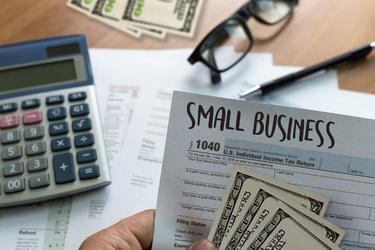
This section may be of the most radical change of previous year tax reform bill and something you cannot underestimate. A lot of Tax Preparer and Accountant referred to it as the best tax break of the 21st Century for small businesses and individual investor.
Under this section, you end up not paying income taxes on the last 20 percent of the income you earn if you are a business owner or a real estate investor. The most interesting part is that you don't have to make exorbitant financial commitments to get the big savings on your income, and you only need to do the right thing as far as your tax return is concerned.
Sole proprietors, partners in a partnership, some real estate investors are given an extra deduction which amounts to 20% of their corporate income.
Scenario 1
You earn $200,000 as a partner in a partnership. What you get as a deduction will equal 20% of the $200,000- or $40,000.
You need to note that it cannot exceed 20% of your taxable income.
Scenario 2
From your earnings of $200,000, you used $48,000 married -filing jointly standard deduction and shelter $52,000 using a solo 401(k). Your taxable income will be $100,000 of partnership profit. You will not get a Section 199A deduction of 20% of the $200,000 of your partnership profits ($40,000) but you will get a deduction equal 20% of $100,000 or ($20,000). You may need to find a tax preparer to help you with this.
Now, the taxable income is sometimes inconsequential. See this case study.
Scenario 3
You earned $200,000 in a partnership and you are married. Your spouse's income from a regular job is $60,000. You employed the $48,000 standard deduction and shelter $52,000 using a solo 401(k). In this scenario, the deduction is 20% of your qualified business income which is $200,000.
Taxable family income, $160,000, will not be factored into the Section 199A deduction calculation because it is more than the qualified business income.
Sole proprietorship profit, real estate investor rental income( that is if your investment in real estate attains the level of trade or business, and the profit allocations of shareholder and partner reported on the K-1s that S corporations and partnerships mailed to their owners are included as Qualified Business Income.
Meanwhile, it does not include capital gains, income from dividend, interest income.
Also, income earned outside the United States is not included. Only domestic income(not income from abroad) is affected by qualified business income deductions.
Interestingly, S corporation shareholder-employee wages, guaranteed payments paid to partners in a partnership, or other amounts paid to partner for service in a partnership are not included as Qualified business income.
Scenario 4:
If the shareholder's share of the profits of an S corporation in a particular business is $200,000, but $120,000 of this profit is paid out as shareholder-employee remuneration and then the other $80,000 is reported on the K-1 of the S corporation, only that $80,000 of profit is accounted as qualified business income and enters into the qualified business income deduction formula.
Scenario 5: If the share of a partner in a business of an S corporation is $200,000, but $120,000 of this profit is paid out as a guaranteed payment and the remaining $80,000 is paid out as distribution and then inputted on the partnership K-1, only that $80,000 profit is accounted as qualified business income and entered into the Section 199A formula.
Professionals with High Income Lose twice
Every standard professional, for instance, doctors and lawyers and others, investment consultants, athletes, performing artists, and any one-person celebrity businesses (maybe you earn appearance fees or income from product endorsement) face another equal phase out.
Lone professionals with income taxable more than $157,500 see their Section 199A deduction phase-out because they are classified as professionals (once taxable income equals $207,500, phase-out is 100%).
Every professional that is married with over $315,000 taxable income see their Section 199A deduction phase-out too for the same reason( this people's phase-out is 100% once their taxable income is $415,000).
Every standard professional, for instance, doctors and lawyers and others, investment consultants, athletes, performing artists, and any one-person celebrity businesses (maybe you earn appearance fees or income from product endorsement) face another equal phase out.
Lone professionals with income taxable more than $157,500 see their Section 199A deduction phase-out because they are classified as professionals (once taxable income equals $207,500, phase-out is 100%).
Every professional that is married with over $315,000 taxable income see their Section 199A deduction phase-out too for the same reason( this people's phase-out is 100% once their taxable income is $415,000).
Professionals like these, especially if they don't have enough W-2 wages or property that depreciates to fully support a Section 199A deduction get whacked again.
Information is power! You need to really saddle yourself with more knowledge on the Section 199A deduction so I will recommend you seek expertise knowledge, find a tax preparer and also read more on the IRS website.
HENRY OSEGO TAX SERVICE